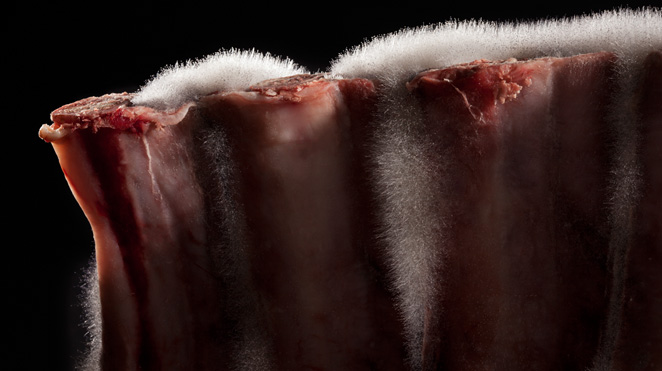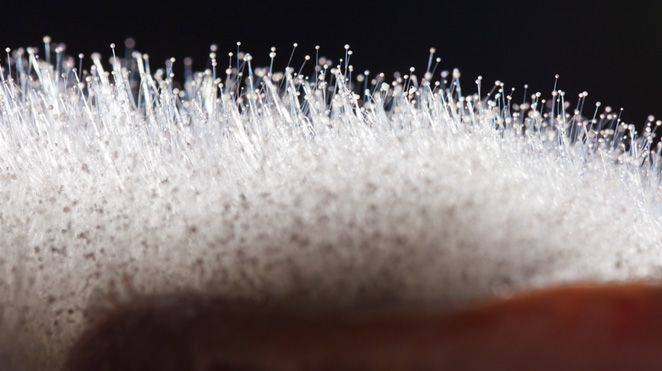Luma Dry Aging Company – aged meat
Luma D.A.C. is the brainchild of long-time friends Lucas Oechslin and Marco Tessaro. These young entrepreneurs age fresh meat using a special mould culture to create products of the very highest quality. The mould culture makes beef, veal and pork incredibly tender and flavourful and gives the meat the nutty aroma that only Luma products have.
The company combines traditional methods with the latest biotechnology. For example, Oechslin and Tessaro insist on the time-honoured method of dry hanging meat on the bone. The special mould culture the company has developed then grows while the meat ages. You can find out more about this under Process.
In just a few short years, their passion for meat has become an emblem of high-quality food. Luma’s loyal customers include leading chefs like Marcus Lindner, Stefan Lünse and Stefan Heilemann.
Luma Dry Aging
Luma gets its meat from selected slaughterhouses. We choose the cuts of meat on-site, based on breed, age, type of feed and how the animals are raised, as well as on conformation and marbling of the meat. Just three percent of the animals meet Luma’s high standards. The cuts of meat we select are transported on the bone to our production facility in Neuhausen, where we cut them to size and spread the mould culture that we have cultivated across the surface of the meat.
Luma found the mould culture in nature, but in order to use it in the food industry it has to be inspected and grown under extremely strict conditions to guarantee that it remains in its purest form.
Once they are unpacked, we place the cuts of meat – still on the bone – in our cooler, where the perfect temperature and humidity play a key role in the success of the maturation process. In the cooler, the mould culture grows evenly throughout the meat. The cuts of meat are kept in the cooler between four and eight weeks, depending on their size and consistency. During this time, the mould culture forms a white coating – the fruiting body – on the surface of the meat. The enzyme of the mould culture changes the taste of the meat and reduces mortis and collagen, which make the meat tough. The mould culture also acts as a sort of regulator in the meat, preventing the spread of undesirable microorganisms.
After it’s aged, the bone-in meat then lands on the butcher's table. The butcher cuts the meat from the bone and removes the visible white fruiting mould culture bodies. The pieces now look like conventional cuts of meat. These pieces are then cut into the desired sizes and vacuum packed and are then made available for purchase.
The cuts lose around 50 percent of their weight through the removal of the white mould culture fruiting body and the bone and because of water loss during storage. Luma uses the pieces of meat left over from creating the larger cuts to produce high-quality hamburgers.
International patent research has shown that Luma has the claim to a worldwide patent on both its process and the mould culture.



LUMA, now available in the USA
Some selected products from our assortment are available in the USA. If you are interested please contact our main office directly:
info@luma-delikatessen.ch
+41(0)526700211
Luma Beef AG
Gewerbestrasse 6
8212 Neuhausen am Rheinfall
Switzerland




